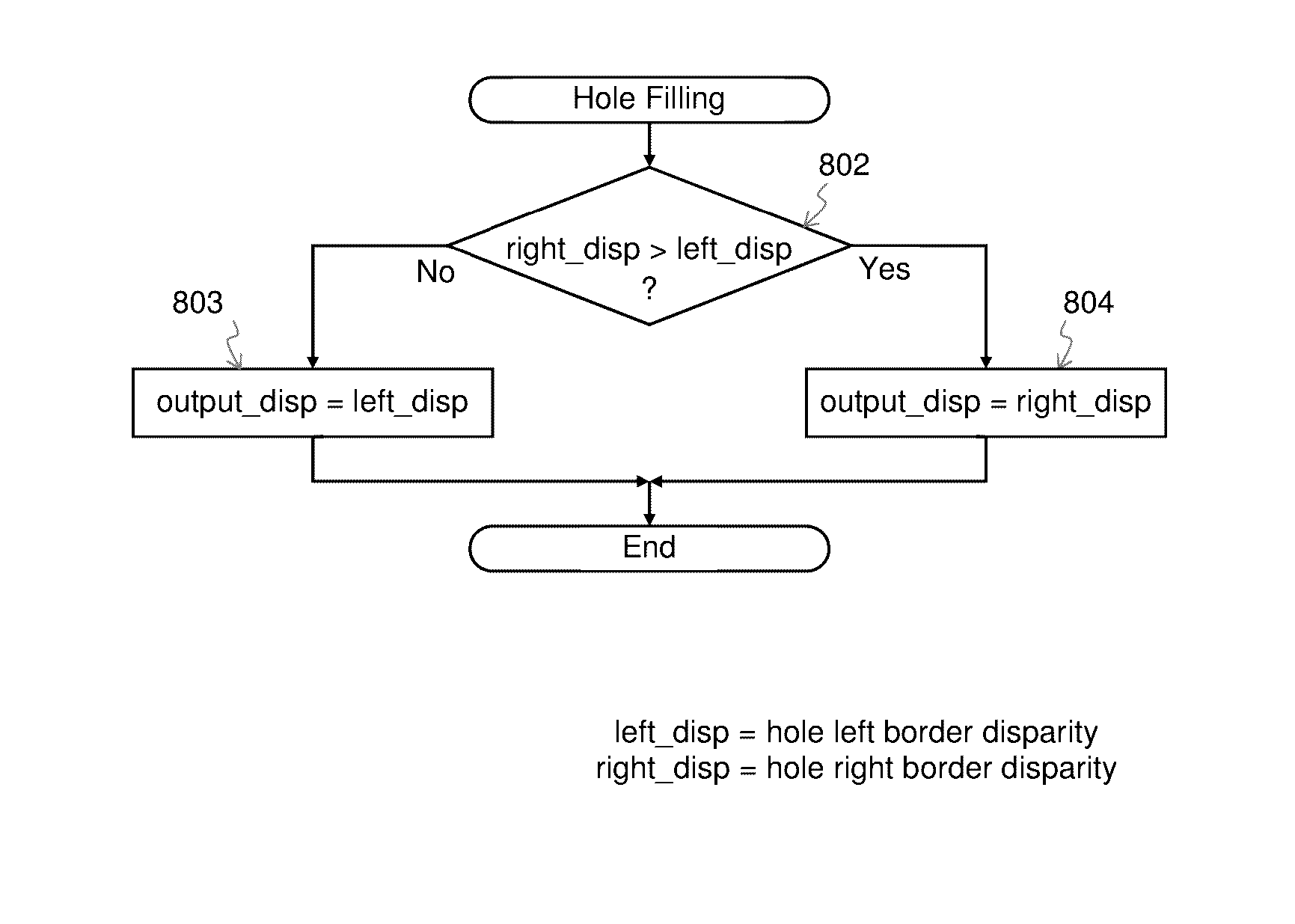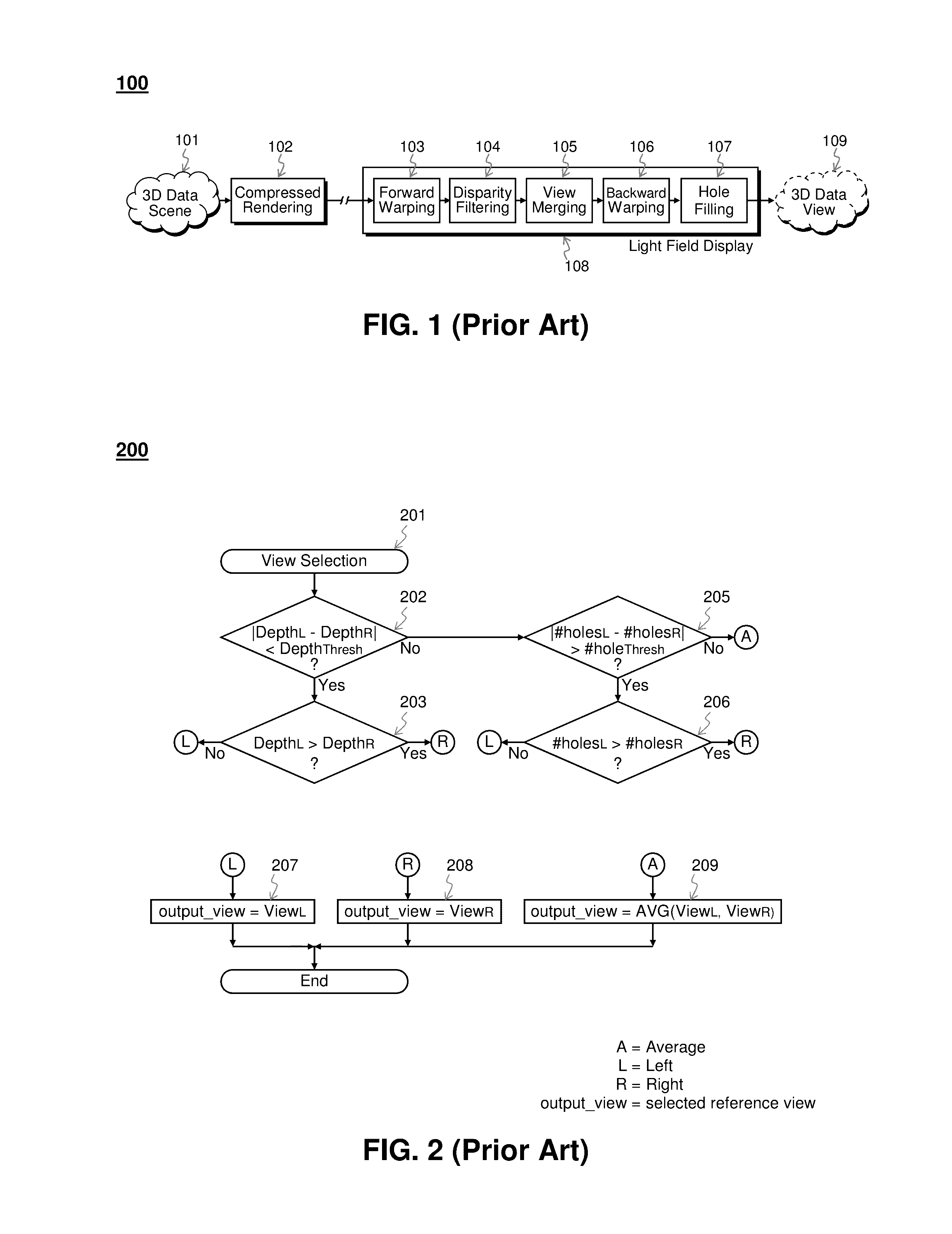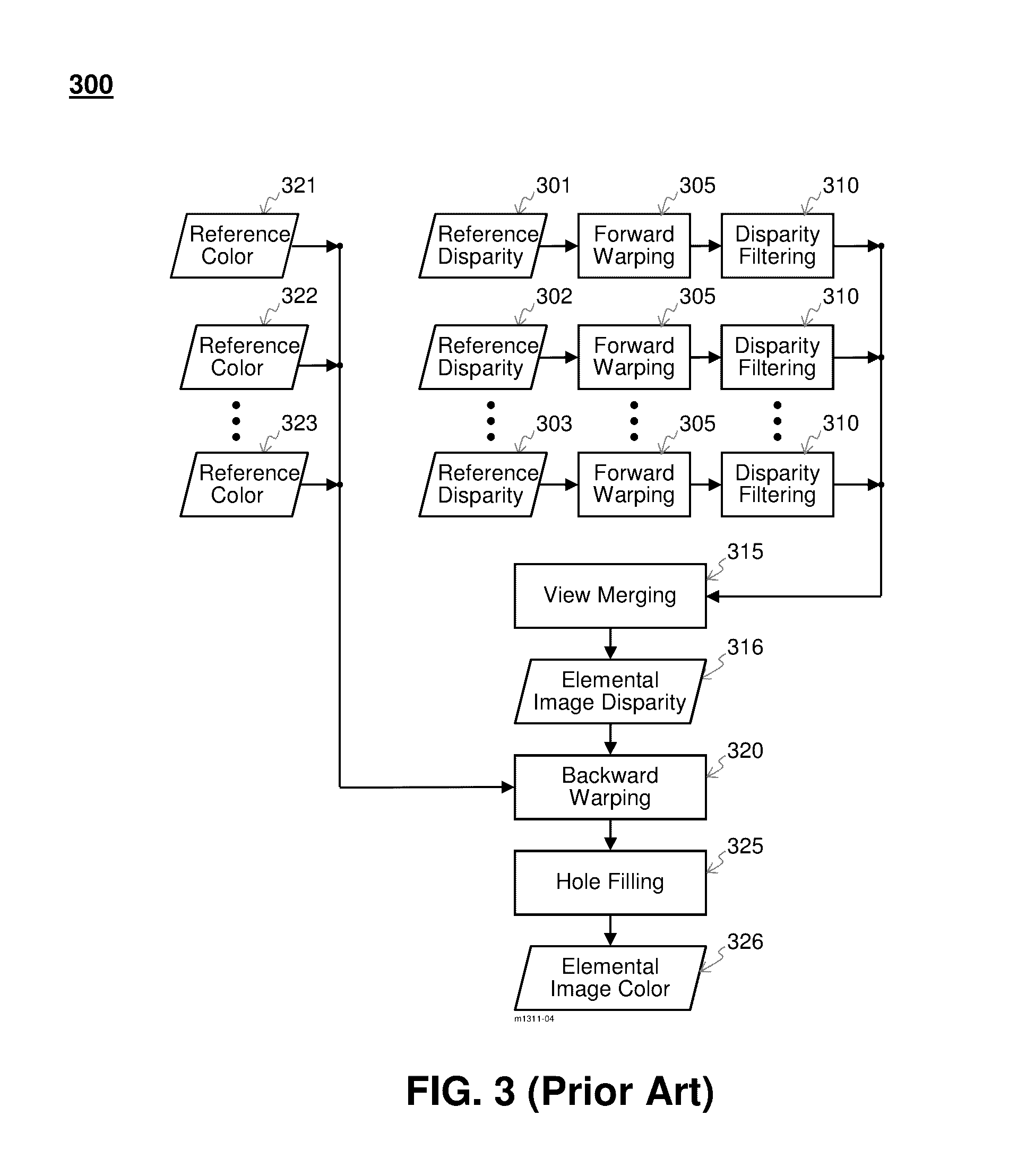Methods for Full Parallax Compressed Light Field Synthesis Utilizing Depth Information
a compressed light field and depth information technology, applied in the field of image and video synthesis, can solve the problems of redundancy in light field, data storage, and data acquisition process, and achieve the effect of reducing the number of pixels, reducing the resolution of display devices, and improving the quality of light field images
- Summary
- Abstract
- Description
- Claims
- Application Information
AI Technical Summary
Benefits of technology
Problems solved by technology
Method used
Image
Examples
Embodiment Construction
[0029]It is the purpose of this invention to disclose a method for view merging that can cope with depth inaccuracies and obtain a high-quality synthesized view with fewer computational resources. The current invention introduces innovative view merging methods for light field synthesis in order to overcome the drawbacks of prior art. Additional objectives and advantages of this invention will become apparent from the following detailed description.
[0030]In the present invention the light field is arranged in a 2D matrix of camera views, each of which is called an “elemental image”. The camera views are identical to each other and arranged in the same depth plane with horizontal and vertical displacements only. For horizontally and vertically aligned views, view warping (projection) can be done by horizontal and vertical pixel shifting. The elemental image is normally integrated into the display architecture. For example, in lens based imaging systems, the elemental images are situa...
PUM
 Login to View More
Login to View More Abstract
Description
Claims
Application Information
 Login to View More
Login to View More - R&D
- Intellectual Property
- Life Sciences
- Materials
- Tech Scout
- Unparalleled Data Quality
- Higher Quality Content
- 60% Fewer Hallucinations
Browse by: Latest US Patents, China's latest patents, Technical Efficacy Thesaurus, Application Domain, Technology Topic, Popular Technical Reports.
© 2025 PatSnap. All rights reserved.Legal|Privacy policy|Modern Slavery Act Transparency Statement|Sitemap|About US| Contact US: help@patsnap.com



